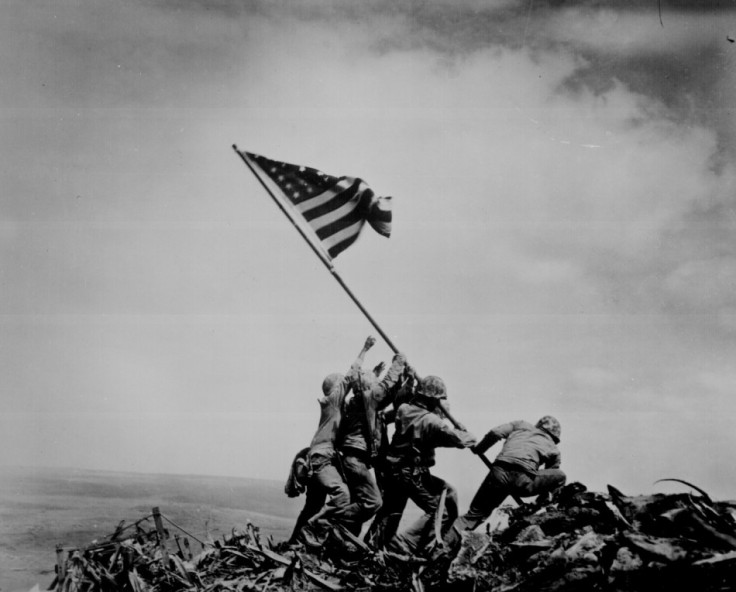US Marine Corps finally probing mistaken identity claims in famous flag-raising Iwo Jima image

Following years of questioning by determined amateur historians, the US military is finally reinvestigating the identities of the servicemen in the famous flag-planting photo that became the iconic image of the five-week battle of Iwo Jima during World War Two.
The photo shows a group of six servicemen struggling to plant an American flag over the detritus of the battle. The photo was taken in early 1945 by Associated Press photographer Joe Rosenthal on Mount Suribachi on the Japanese island of Iwo Jima.
Amateur historians Eric Krelle, of Omaha, Nebraska, and Stephen Foley, of Wexford, Ireland, have hounded the military, arguing that the man identified as Franklin Sousley in the photo was actually Harold Henry Schultz of Detroit, who died in 1995, Associated Press reported. Sousley was in the photo, but was misidentified as Navy corpsman John Bradley, according to the historians. If that is the case, then Bradley, who is also dead, was not in the photo.
The moving, powerful image was featured in several newspapers and magazines soon after it was taken. It later was the basis for the Marine Corps War Memorial statue in Arlington, Virginia. Rosenthal was unable to get the names of the men in the photo at the time it was taken and President Franklin Roosevelt later asked the military to identify the men in the increasingly popular image.
Following surgery in 2013 Foley had time on his hands to read about the battle of Iwo Jima and pore over photos of the scene. He happened to notice discrepancies in the identities linked to Rosenthal's photo and other images taken of the same group of men the same day. He contaced Krelle with his doubts and they worked to track down the truth.
It turns out there were actually two flags raised that day on Mount Suribachi. A first flag went up in the morning, before a serious firefight with Japanese soldiers who were hiding in nearby caves. The second raising of a larger flag occurred later and was featured in Rosenthal's photo.
"People can hold on to what they have always believed," Krelle told the Omaha World-Herald in 2014. "But to me, the photos are the truth."
In 2015 yet another historian, Dustin Spence from California who made a documentary about the flag-raising, approached the Marines along with Foley with findings that they said showed problems with the identifications.
The historians have made such a convincing case that even James Bradley, son of the man originally thought to be in the photo, now doesn't believe his father was in the image, the New York Times reports. James Bradley wrote the bestselling book that became a movie, Flags of Our Fathers, about how his father and five other marines came to lift the flag in the iconic image.
Now the Marine Corps is "examining information provided by a private organization related to Joe Rosenthal's Associated Press photograph of the second flag raising on Iwo Jima," spokeswoman Captain Sarah Burns said in a statement.
The effort to determine the correct identities is not an attempt to diminish anyone's contribution in the gruelling battle, Burns said. The Marine Corps is "humbled by the service and sacrifice of all who fought on Iwo Jima," she emphasised.
"Rosenthal's photo captured a single moment in the 36-day battle during which more than 6,500 US servicemen made the ultimate sacrifice for our nation and it is representative of the more than 70,000 Marines, sailors, soldiers and Coast Guardsmen who took part in the battle."
© Copyright IBTimes 2025. All rights reserved.






















